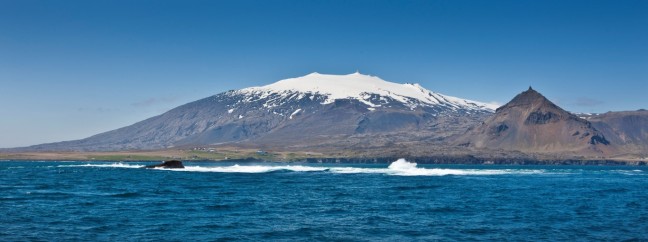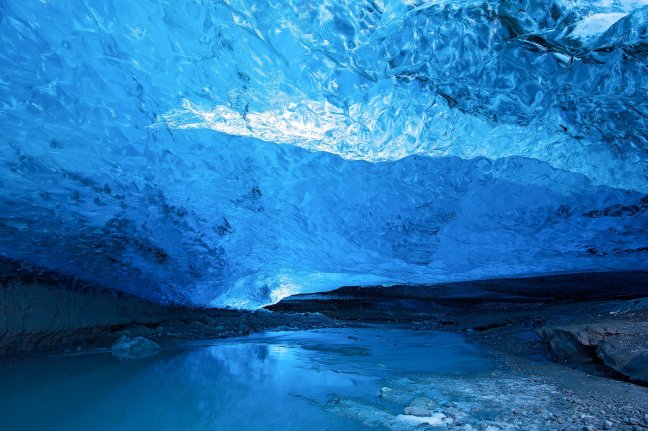Around 10.2% of the total land area of Iceland is covered by glaciers. Due to global worming, they are retreating at an accelerating rate. This alone would be enough reason to talk about them as much is possible and hope that appreciation for nature and its wonders will come from knowledge. Although you can find many interesting facts about glaciers on All about glaciers, I will not hesitate to tell you some of these facts myself.
A Glacier is formed when a huge amount of snow accumulate and can’t melt for very long period of time. Snow becomes so thick it turns into ice. The largest Icelandic glacier is Vatnajökull with surface area of 7764 km². Every glacier is slowly moving downhill like a huge icy river. Observing a glacier for some period of time, we could notice that while some years it’s going down, other years it’s retreating up. But, this is just an illusion due to a melting. Every glaciers is always going downhill, no matter what.

Snæfellsjökull glacier is a small glacier located in Snæfellsjökull National Park (one of three national parks in the country). It can be seen from Reykjavik on a clear day. Like many other glaciers in the country, Snæfellsjökull is also a volcano, a stratovolcano shaped like a cone. In Jules Verne’s Journey to the Center of the Earth, it is the entry point to the centre of the earth. In August 2012 the summit was ice free for the first time in recorded history.

One of the things I’m very eager to experience on Iceland are glacier caves, often mistakenly called the ice caves. The difference is in the way how they were formed. The ice caves are formed in “regular” caves where water has turned to ice and where temperatures are, at least in some parts of a cave, below 0°C all year round. Glacier caves are formed in glaciers, therefore in ice, where holes are carved by water running through or under the glacier. Scalloped, translucent walls that transmit a blue light are one of the most beautiful sights I’m expecting to see.Forming of these caves is due to ice melting or existence of a volcanic vents or hot springs underneath the glacier. When ice is melting and meltwater enters the glacier vertically (or almost vertically), well-like shafts, called moulins, are created (the term moulin is derived from the French word for mill). Moulins can be up to 10m wide on the surface and appear as really endless abyss.
